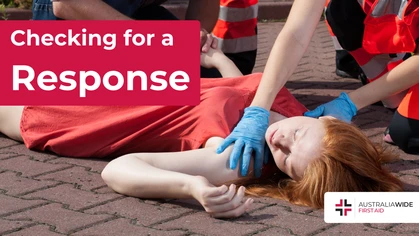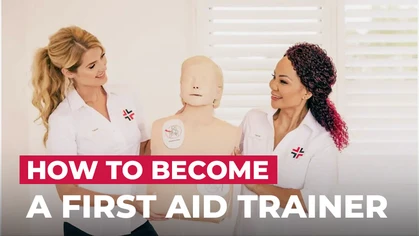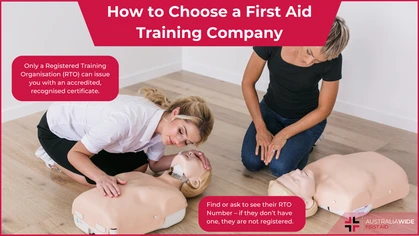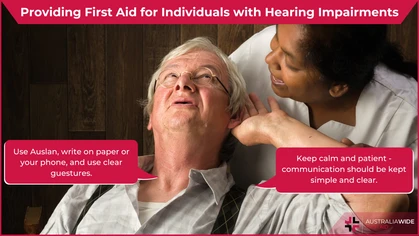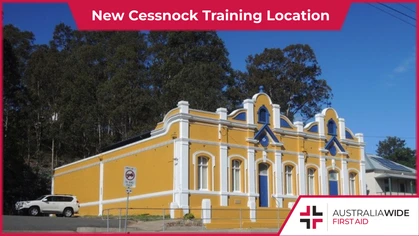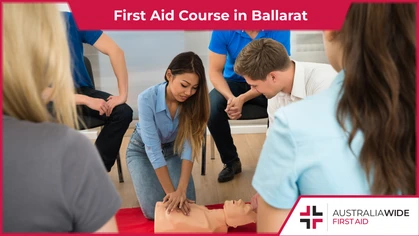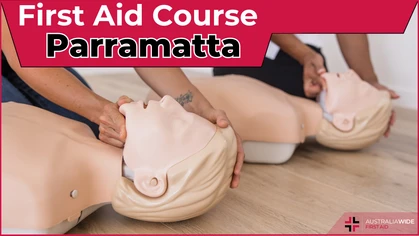First Aid Course Port Adelaide

First Aid Training
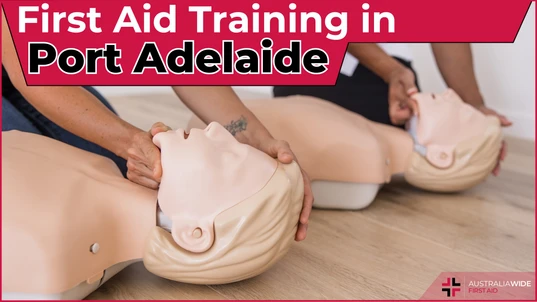
Our first aid courses in Port Adelaide are innovative, inexpensive, and nationally accredited. Upon completing our Port Adelaide first aid courses, you will have the knowledge and skills to manage a variety of medical emergencies.
Did you know that you don't need to live in a central business district (CBD) to have access to world-class first aid courses? As well as offering first aid courses in the Adelaide CBD, we offer first aid courses in Port Adelaide. Port Adelaide is a port-side region that was established in 1836 and became the gateway to trade and commerce in South Australia. Our first aid courses in Port Adelaide will empower you with the knowledge and skills to prevent and manage a variety of first aid emergencies. On top of that, our first aid courses are cheap, convenient, and nationally recognised. In this article, we will outline why our first aid courses in Port Adelaide will help you become a confident and effective first aider that contributes to the safety of their local community. If you are ready to become a first aid pro, click the relevant link below to enrol in a Port Adelaide first aid course:What is first aid, and why is it important?
First aid is the immediate medical assistance rendered to a person who has sustained a sudden illness or injury while waiting for professional medical care. First aid treatment is not a substitute for professional medical care. However, having a competent first aider on hand during a medical emergency can make the difference between life and death. Competent first aiders are trained to take control of the emergency scene and respond confidently to the casualty's condition. This subsequently reduces the casualty's risk of death or permanent disability. Likewise, competent first aiders are taught to identify and minimise potential hazards in the home and workplace, which is why first aid training is a requirement for many Australian jobs.What are the 'Three Ps' of first aid?
The importance of first aid is captured by its three objectives - the 'Three Ps':- Preserve Life: The primary objective of first aid is to preserve live. This means following the DRSABCD action plan to assess the emergency scene for danger, to call Triple Zero (000) or 112 for an ambulance, to check the casualty's breathing, and to commence CPR and defibrillation as necessary. DRSABCD is designed to keep the casualty and others at the emergency scene safe until an ambulance arrives. We will break down the steps of DRSABCD in the next section.
- Prevent Deterioration: The second objective of first aid is to prevent the casualty's medical condition from deteriorating while waiting for an ambulance. This involves helping the casualty into a safe and comfortable position, and using first aid principles to treat their condition/s, whether that be a burn, fracture, or seizure.
- Promote Recovery: The third objective of first aid is to encourage the casualty's confidence and relieve their pain. This objective can go a long way in aiding the casualty's recovery process.
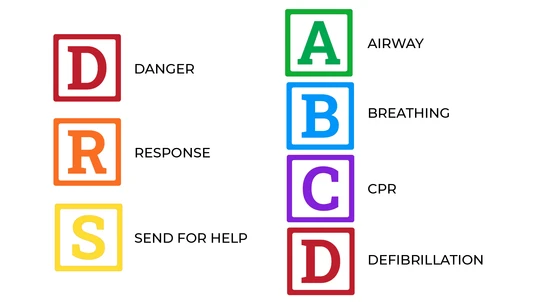
DRSABCD is the essential action plan for first aid situations. It helps first aiders prioritise their actions and keep the casualty and bystanders safe until formal medical intervention arrives.
What is DRSABCD?
As we mentioned earlier, the primary objective of first aid, to preserve life, hinges on the use of the DRSABCD acronym. DRSABCD is the essential action plan for first aid situations. It outlines the sequence of steps a first aider should take when they encounter an ill or injured person. The purpose of DRSABCD is to maintain the casualty's safety, and the safety of others at the emergency scene, while waiting for an ambulance:D for Danger:
When you come across a medical emergency, firstly assess the scene for any physical threats to yourself, the casualty, or other bystanders. Examples of danger could include live wires, moving vehicles, or the casualty themselves. If you do not assess the scene for danger, you could run the risk of adding more people to the casualty count, which would make first aid unmanageable.R for Response:
Once you have assessed the scene for danger, use the COWS acronym to assess whether the casualty is responsive:- C: Can you hear me?
- O: Open your eyes
- W: What is your name?
- S: Squeeze my hands
S for Send for Help:
First aid is not a substitute for professional medical care. As such, once you have assessed the casualty’s responsiveness, shout for someone in your vicinity to call Triple Zero (000) or 112 for an ambulance. You should also get another person to collect a defibrillator. If no one is around, contact emergency services yourself.A for Airway:
To ascertain whether that the casualty's airway is clear, lift their chin and tilt their head back. If their airway is obstructed by foodstuffs, dentures, or any other foreign item, roll them into the recovery position and sweep the debris out with your fingers.B for Breathing:
Assess whether the casualty is breathing normally by seeing if their chest if rising and falling, by listening at their mouth for sounds of normal breathing, and by placing your cheek near their mouth and feeling for air. If the casualty is breathing normally, roll them into the recovery position, and monitor and treat their condition until the ambulance arrives. If the casualty is not breathing normally, move onto the next letter of the DRSABCD acronym.C for Cardiopulmonary Resuscitation (CPR):
CPR is the essential first procedure for treating a casualty whose heart has stopped beating. CPR imitates the function of the heart and lungs. It keeps oxygenated blood flowing around the body until professional medical care can be used to restart the heart. Head to our Chart Library for step by step instructions on how to perform effective CPR on adults, children, and infants.D for Defibrillation
If the casualty does not resume breathing or consciousness after administering CPR, use an automated external defibrillator (AED) to restart their heart as necessary. AEDs are portable, compact machines that can deliver an electrical shock to return the heart to its normal rhythms, when appropriate. AEDs come with inbuilt verbal instructions, so simply follow the prompts until an ambulance arrives. Head to our Resource Library for more information on how to apply AED electrode pads to a casualty’s body. As you can see, DRSABCD is primarily focused on how to help an unconscious person who is in need of CPR or defibrillation. DRSABCD does not cover other first aid principles, which are addressed in the second objective of first aid, to prevent deterioration.First aid course Port Adelaide
In our Port Adelaide first aid courses, you will develop the following skills and knowledge:HLTAID009 Provide CPR
Our Port Adelaide HLTAID009 course is trained and assessed in line with the Australian Resuscitation Council (ARC) guidelines. It will teach you how to respond to an emergency using DRSABCD, how to perform CPR, and how to use an AED. Our Port Adelaide HLTAID009 course comprises an online eLearning component and face to face assessed training. It is recommended that you allow up to 2.5 hours to complete the online eLearning component. The face to face assessed training, meanwhile, takes 2 hours in a classroom environment.HLTAID011 Provide first aid
Our Port Adelaide HLTAID011 course is trained and assessed in line with the Australian Resuscitation Council (ARC) guidelines. It will teach you how to respond to an emergency using DRSABCD, how to perform CPR, how to use an AED, and how to apply first aid principles for a variety of injuries or illnesses, including shock, hypoglycaemia, and hypothermia. Our Port Adelaide HLTAID011 course comprises an online eLearning component and face to face assessed training. It is recommended that you allow up to 6 hours to complete the online eLearning component. The face to face assessed training, meanwhile, takes 4 hours in a classroom environment.HLTAID012 Provide first aid in an education and care setting
Our Port Adelaide HLTAID012 course is trained and assessed in line with the Australian Resuscitation Council (ARC) guidelines. It will teach you how to respond to an emergency using DRSABCD, how to perform CPR, how to use an AED, and how to provide first aid in emergency situations common to the education and care industry, such as anaphylaxis and asthma. Our Port Adelaide HLTAID012 course comprises an online eLearning component and face to face assessed training. It is recommended that you allow up to 6 hours to complete the online eLearning component. The face to face assessed training, meanwhile, takes 5 hours in a classroom environment.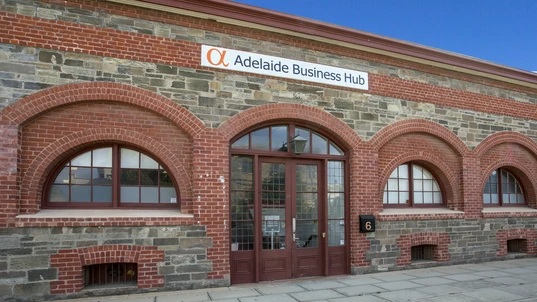
What to expect from your first aid course Port Adelaide
As we mentioned earlier, all of our first aid courses in Port Adelaide comprise an online eLearning component and face to face assessed training. The online eLearning component is a multiple-choice quiz that you can attempt as many times as you need with the support of our free First Aid eBook. It must be completed at least the night before attending your first aid course in Port Adelaide. Once you have completed the online eLearning component, you will get to test your knowledge during the face to face assessed training with the support of an experienced AWFA trainer. We pride ourselves on developing the most effective first aiders possible. As such, the trainers at our first aid courses in Port Adelaide are industry leaders who have a wealth of personal and professional experience in first aid situations. Our first aid courses in Port Adelaide also have the following amenities to keep our students comfortable and engaged in the learning process:- Parking only walking distance away
- Accessible via public transport
- Toilets
- Drinking water
- Classroom-style seating
- Hygiene in line with current infection controls
- HLTAID012 students also get a scheduled 30-minute lunch break
Final thoughts
Our first aid courses in Port Adelaide are perfect for those people who want to contribute to the safety of their local communities. During our Port Adelaide first aid courses, you will undertake online eLearning and face to face assessed training to develop the knowledge and skills to preserve life, prevent deterioration, and/or promote recovery when a medical emergency occurs. To enrol in our Port Adelaide first aid courses today, simply head to our location page and follow the prompts.
Originally published at
https://www.australiawidefirstaid.com.au/resources/first-aid-course-port-adelaide
as part of the Australia Wide First Aid Articles Library
